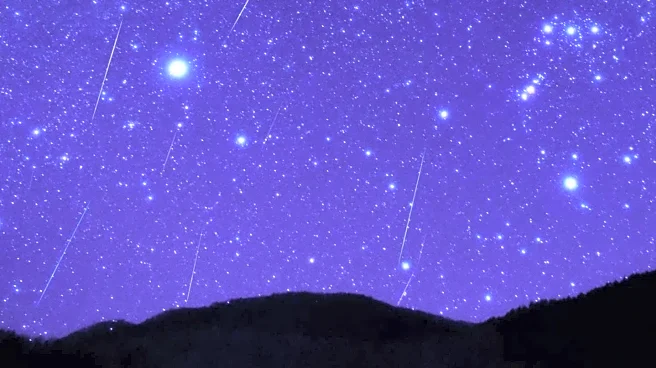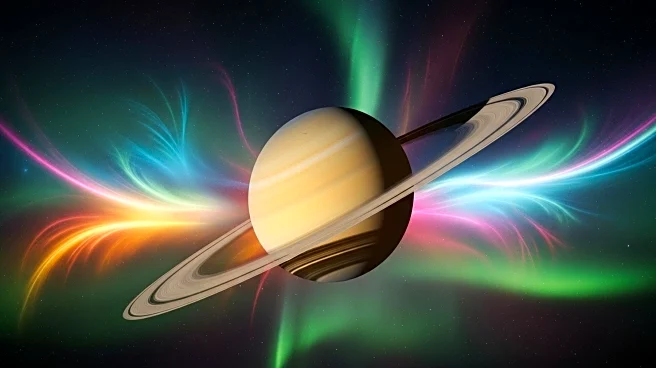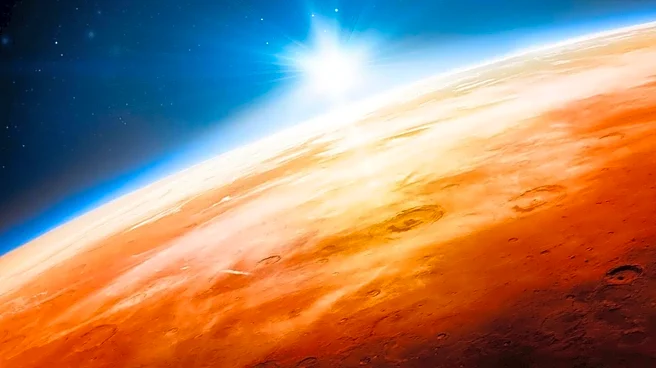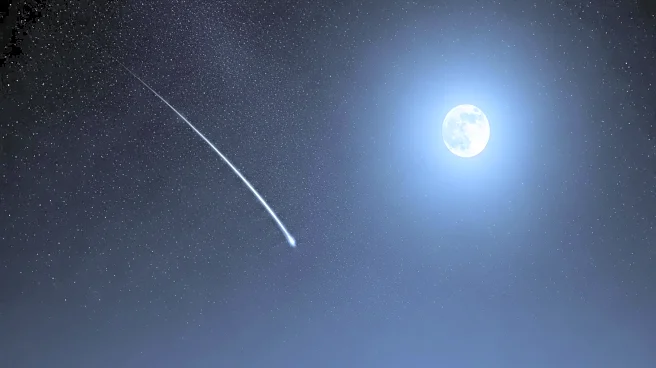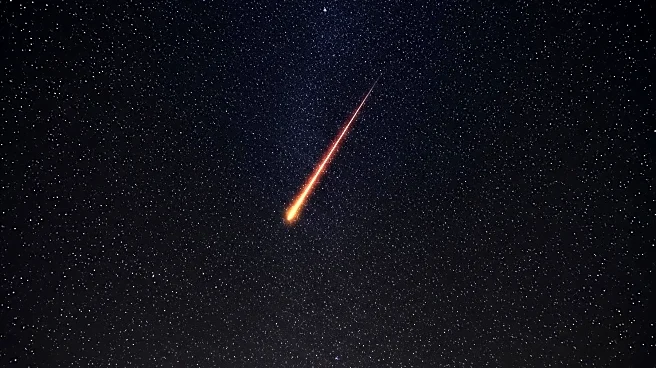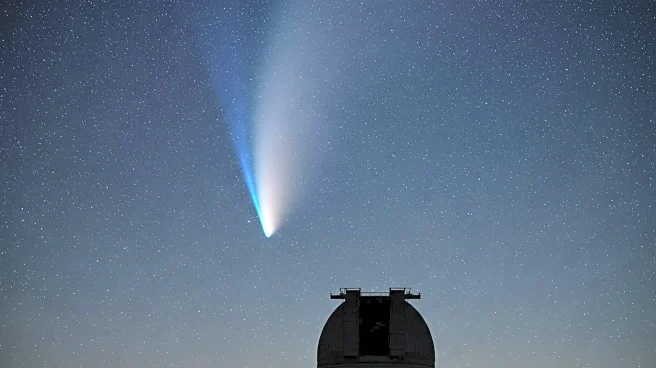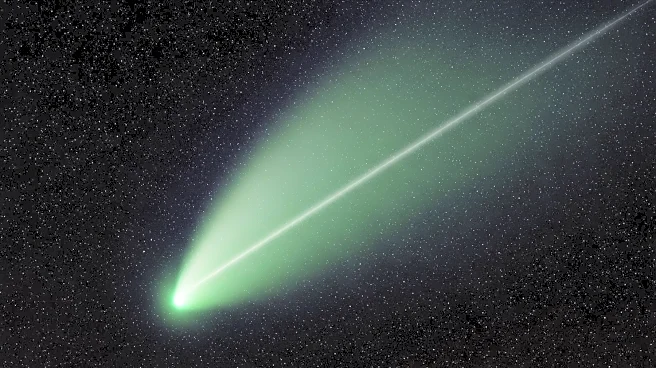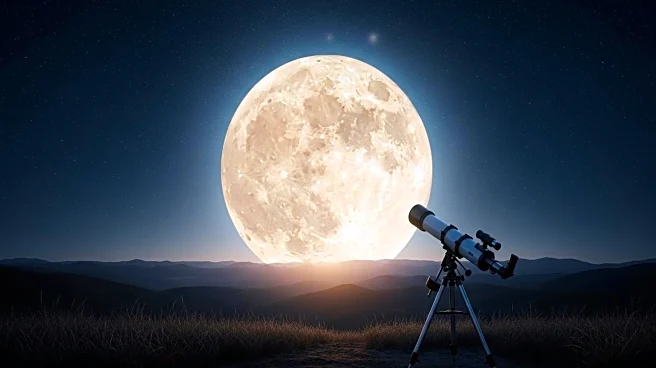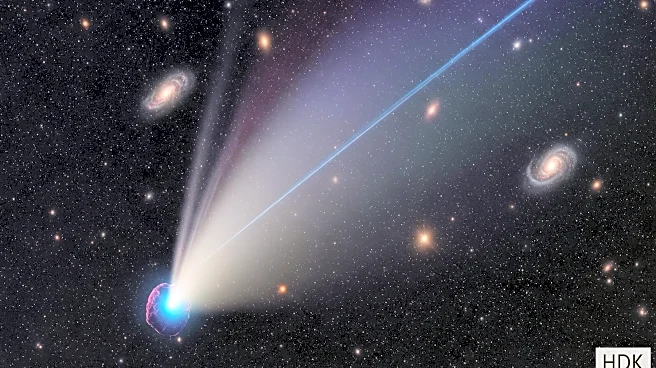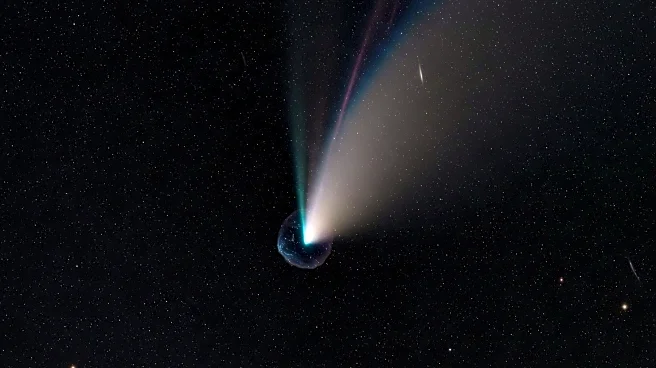What is the story about?
What's Happening?
October is set to be a remarkable month for stargazers with several celestial events. The Draconid meteor shower will peak on October 8, although the brightness of the full moon may obscure all but the brightest meteors. The Orionid meteor shower, originating from Halley's Comet, will peak on October 21, coinciding with a new moon, providing optimal viewing conditions. Additionally, October 6 will see the rise of a 'harvest supermoon,' appearing larger and brighter due to its proximity to Earth. Other notable events include the close approach of the moon and Saturn on October 5, and the convergence of the moon and the Pleiades star cluster on October 10.
Why It's Important?
These astronomical events offer unique opportunities for both amateur and professional astronomers to observe and study celestial phenomena. The Draconid and Orionid meteor showers provide insights into cometary debris and the dynamics of meteoroid streams. The supermoon offers a chance to observe the moon's surface features in greater detail. Such events also have cultural significance, often inspiring public interest in astronomy and science. The visibility of these events across the U.S. can engage communities in educational activities and foster a greater appreciation for the night sky.
What's Next?
As these events unfold, astronomers and enthusiasts will likely share observations and data, contributing to a broader understanding of meteor showers and lunar phenomena. Public interest may lead to increased participation in stargazing events and educational programs. The visibility of these events may also prompt discussions on light pollution and its impact on astronomical observations.
AI Generated Content
Do you find this article useful?
